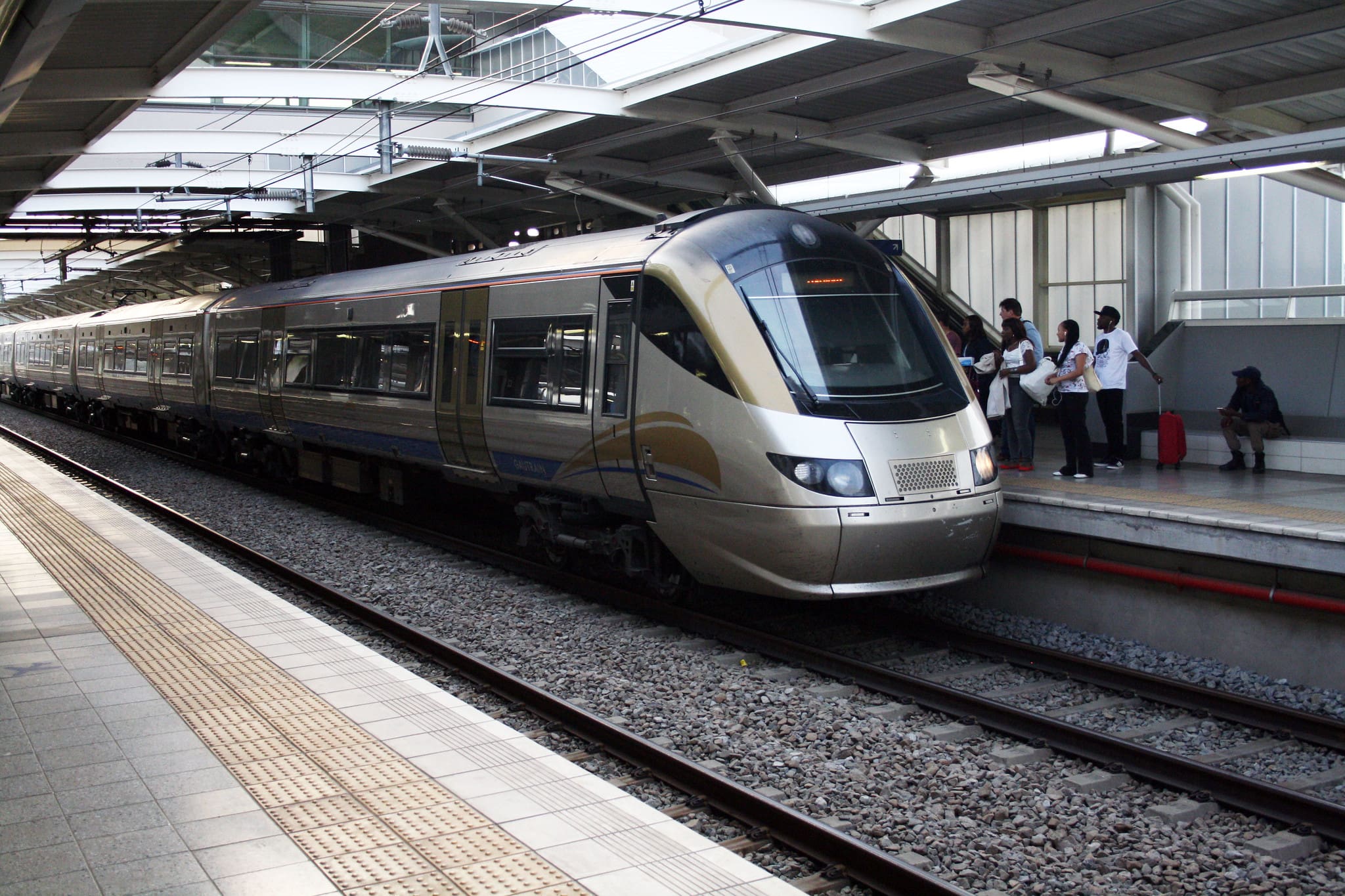Remember when the Gautrain was shiny and new, and we all couldn’t wait to get on? What was once one of the most reliable modes of transport, helping us avoid bumper-to-bumper traffic, is now a shadow of its former self. It has been known for convenience, but lately, commuters have found themselves caught in endless disruptions, technical glitches, unexpected delays, and even the train just stopping, leaving passengers frustrated. What’s going wrong?
Let’s go back a little…What is the Gautrain?
The Gautrain project results from thorough planning and studies conducted in the late 1990s; its primary objectives were to ease road congestion and support economic growth.
In February 2006, then Finance Minister Trevor Manuel announced that R7.1 billion from the national budget would be allocated to the Gautrain rapid rail project.
Gauteng Premier Mbhazima Shilowa confirmed that the province had finalised commercial terms with the Bombela Consortium, the preferred bidder.
Construction started in 2006, and the first route was between OR Tambo International Airport and Sandton, which became operational just in time for the 2010 FIFA World Cup, which we hosted. On the launch day, 8 June 2010, eager passengers lined up as early as 5 AM to experience what many called a “joy ride.” A year later, in August 2011, the route between Rosebank and Hatfield was introduced.
The Gautrain project was implemented as a Public-Private Partnership. The Gauteng Provincial Government is the main public partner and supporter of the project, and the company responsible for running the project is the Bombela Concession Company (Pty) Ltd. Bombela is a transport operating company. They do not just focus on trains but also manage buses, midibuses, and stations, ensuring 95% availability and punctuality in all Gautrain services.
This company is a joint venture between the local black-owned company Strategic Partner Group, which holds a 36.6% stake, and the French urban transport operator RATP Dev, which owns a 63.4% share. The Gauteng government owns the Gautrain’s assets, and Bombela’s 19.5-year contract runs until March 2026. Following this term, the Gautrain Management Agency (GMA) has initiated a procurement process to select a new operator for the Gautrain system beyond March 2026.
Critics say Gautrain expansion ignores the needs of the majority
According to the Automobile Association (AA), the high-speed train has received criticism that money is being used at the expense of the poor and that it does not work to serve the townships of Gauteng, where transport issues are severe and where most people live. The AA is strongly against spending billions on extending the train system and has said that the government should rethink the plan before it’s too late. The Association is especially concerned about Premier Panyaza Lesufi’s announcement that Gauteng will invest R120 billion in the Gautrain expansion.
“In 2021, we made a detailed submission urging the provincial government to stop any plans to extend the Gautrain. We called it a ‘White Elephant’ because it mainly benefits a small group of people who don’t really need it, while the majority, who rely on public transport, are left out,” says the AA.
Recently, Gautrain made headlines for firing bus drivers. According to SA Municipal Workers Union (SAMWU), these bus drivers were fired for refusing to drive buses that they claim are unroadworthy and don’t have proper permits. The union says the drivers were locked out of their Midrand workplace, leading to major disruptions in the bus service. Samwu representative Ester Mtatyana says about 300 workers have lost their jobs.
Problems the Gautrain has faced
🔹 A resident’s borehole drilling went wrong.
In early February, a Killarney resident illegally drilled a borehole, hoping to access underground water. However, this reckless move led to a section of the railway between Park Station and Rosebank being disrupted.
🔹 Operational issues
Users of the Gautrain have frequently complained in recent months about delays, technical glitches, and overcrowding during peak hours. These problems have gotten worse in recent months, with users of the Gautrain app reporting that they see notifications about delays almost every day now.
🔹 People have likened it to a Metrorail
Commuters have made claims that the Gautrain is like Metrorail. This couldn’t be further from the truth, however, since the Passenger Rail Agency of South Africa has been hard at work to restore the country’s railway infrastructure after years of vandalism and looting.
🔹 Bombela’s contract is coming to an end
With the Bombela contract set to expire in March 2026, the Gauteng provincial government will have to find a new service provider to take over the project. The Organisation Undoing Tax Abuse (OUTA) has called for a transparent process in selecting a new operator. OUTA CEO Wayne Duvenage said corruption thrives “when there is a lack of transparency.”
During his State of the Province address in February, Lesufi announced plans to extend the Gautrain operations to areas that have not been receiving Gautrain services, such as Soweto, Fourways, Mamelodi, and Lanseria. He said that the expansion would need a R120 billion investment and could generate over 125,000 construction jobs.
What’s next for the Gautrain?
With the Gautrain facing operational challenges and a management transition underway, commuters wonder if their once-reliable train will ever return to its former glory. Will a new operator bring stability, or will the Gauteng government’s track record of failed projects repeat itself? Only time will tell. For now, all aboard!



